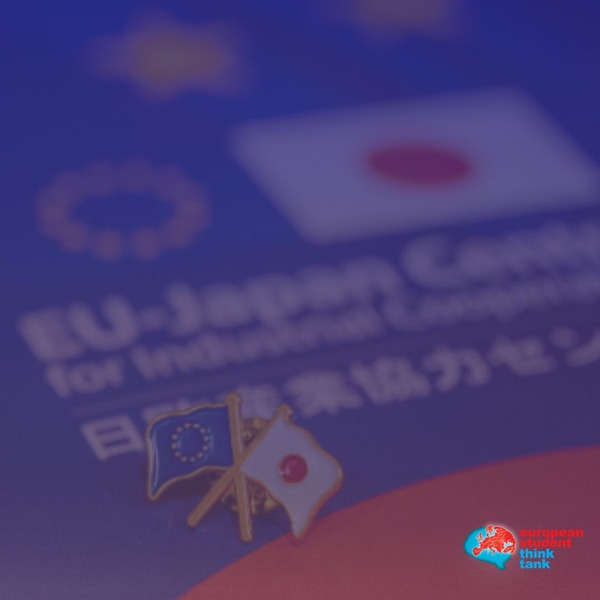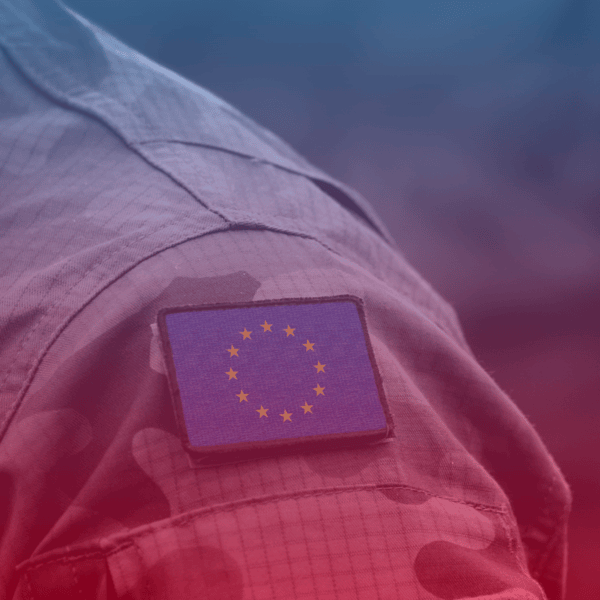
Written by: Andri Stavrou
Edited by: Irene Reyes
A few months have passed since Ursula von der Leyen started her second mandate as the President of the European Commission. The Commission’s priorities for 2024-2029 have been pinned down and the list includes: sustainability, security and defense, ensuring social fairness, protecting democracy, strengthening collaborations and modernizing the EU budget (von der Leyen, 2024). The Indo-Pacific area has been listed as “a decisive region for the world’s future” and the EU aims to build on the existing strategy and deepen its engagement with partners in the region. Japan has been targeted – along with Korea, New Zealand and Australia – as one of the countries that the EU will cooperate closely with, mainly on sectors such as cyber, space and supply of minerals and technologies as they all face the same difficulties and challenges (Ibid., p. 27-28). With the new EU Presidency declaring its intentions from the start regarding this bilateral relations, what opportunities and risks could arise?
This article will present the risks and opportunities of the new European Commission mandate on the EU-Japan relations. First, it will lay out the historical background of the relationship, then, it will outline the opportunities that arise from this mandate. Finally, it will assess the risks and the external factors that might emerge as a threat.
An EU-Japan relationship that goes way back
Records have been found showing that Japan started relations with Western civilization centuries ago. The first Europeans that arrived in Japan were recorded in the 16th century, and more specifically on the island of Tanegashima in 1543, where three Portuguese traders landed (Walle, 2012). It has been documented that a few years later, in 1549, Spanish missionaries arrived in Japan aiming to spread Christianity. Their arrival brought new opportunities to the locals who began commercial relations with them introducing them to new technological weaponry such as the matchlock guns. It has been recorded that Japan’s previous military capabilities were based on sword fighting and archery (National Library of Australia).
Following years of civil wars and instability, a military government of Japan, the Tokugawa shogunate took the reins and isolated the country. It was in “mid-nineteenth century, when the Tokugawa shogunate opened Japan’s doors to the Western world” (Watanabe, p.1). This tactic led to new opportunities for the country, leading to new trade and diplomatic agreements. Throughout the years, Japan built and maintained bilateral relations with many European countries. After World War II, the EU and Japan strengthened their relations. Among the diplomatic achievements were the establishment of a European delegation in Tokyo by the European Community in 1974 and the establishment of the EU-Japan Center for Industrial Cooperation in 1984. By the end of the Cold War and the decade of 1990s, European countries began to show interest in the Asian region, including China and other countries “for overseas capital investment” (Ibid., p.2). It is worth mentioning that Japan has been a member of the World Trade Organisation (WTO) since 1995.
The EU-Japan trade in numbers
One might ask which side is the winner of this trade agreement and holds the reins? According to the European Commission’s data last updated in May 2024:
- Japan is the EU’s 2nd biggest trading partner in Asia, after China.
- Japan is the EU’s 7th largest partner for exports and imports of goods (ranking 6th for EU exports of goods and 8th for EU imports).
- Bilateral trade in goods with Japan is highly concentrated in the industrial sector, which represented 93% of the bilateral goods trade in 2023. Trade in agricultural products amounted to 6.2%.
- Imports of goods from Japan to the EU are dominated by machinery, motor vehicles, chemicals, optical and medical instruments, and plastics.
- EU exports of goods to Japan are dominated by chemicals, motor vehicles, machinery, optical and medical instruments, and food and drink.
- In 2023, a surplus of €11.8 billion in total trade with Japan was driven by trade in services. Trade in services amounted to €54.2 billion in 2023 (compared to €47 billion in 2019), representing an increase of 14.3%, with the EU enjoying an €18 billion surplus.
- Japanese investment stock in the EU is very significant (€236 billion), mainly in the Netherlands and Germany, while EU investment in Japan amounts to €92 billion.
Regarding military cooperation with the West, Japan has been cooperating closely, mainly building bilateral alliances such as NATO. One might ask whether these collaborations could lead to geopolitical tensions?
Risks
Strengthening EU-Japan relations might provoke geopolitical tensions as powerful players such as China, Russia and North Korea may interpret these diplomatic relations as a threat. With strong military cooperation between China and North Korea and the ballistic missile tests in the region, tensions might escalate fast (Euronews, 2024). The new EU-Japan Security and Defense Partnership between, highlighted the need to enlarge collaboration. The areas of cooperation include: maritime security (including operations and exercises), space security and defense, cyber security, non-proliferation, disarmament, conventional arms, (including small arms and light weapons), development on defense initiatives, cooperation on peacekeeping, conflict prevention and crisis management, deepened coordination on counter-terrorism, preventing/countering violent extremism and commitment on fully implement the Women, Peace and Security (WPS) agenda (EEAS, 2024).
Moreover, even though the partnership between the EU and Japan seems to be strengthening as they share similar values in many areas, the two players have different priorities. On the one hand, the European Commission, based on the Draghi report recommendations, has published a Competitiveness Compass announcing the EU’s top priorities which are “innovation, decarbonisation and security” (European Commission, 2025). Thus, EU policies might not align with Japan’s domestic policies and priorities. Furthermore, wars and other global political escalations could be a threat to the EU-Japan partnership. For instance, the EU’s involvement in wars – either indirectly or directly – could overstretch its resources. The same goes with Japan, other commitments for other Asian partners could exhaust the resources. As a result, there is a slight risk that both players will not be able to deliver on what they promised.
Opportunities
The European Union considers Japan as the “closest strategic partner in the Indo-Pacific region. It is based on long standing cooperation, common interests and shared values, supporting human rights and democracy, multilateralism, and a rules-based international order based on the UN Charter, as well as open, free and fair trade and a green transition” (EEAS, 2024). Many European companies used to face obstacles when exporting goods and services to Japan. The EU and Japan’s Economic Partnership Agreement (EPA) which took effect in February 2019, led to many benefits. It is recorded that “EU firms already export nearly €70bn in goods and €28bn in services to Japan every year” (European Commission). This trade agreement made huge progress by removing tariffs and trade obstacles. More opportunities between the two parties have emerged and in October 2023, they have concluded an agreement on “cross-border data flows”.
Many initiatives have emerged that offer opportunities for closer partnerships. For instance, initiatives such as “Invest in EU Hub” is a new service for Japanese investors and key stakeholders to find potential investments in an EU member state (EU-Japan Center for Industrial Cooperation). Many services, programmes and tools that help collaboration have been “supported or co-financed by the European Commission, the European Investment Bank or other EU-level institutions” (Ibid). Progress has been spotted on Research and Innovation as the negotiations for Japan’s association to Horizon Europe. If successful, the funded projects will focus on societal challenges (Pillar II). Advancements have been achieved also on the green transition. Key partners of the EU-Japan Green Alliance have set common targets to combat climate change.
Conclusion
With the trade war and the increase of tariffs against the European Union, other international markets such as Japan could be a solution. Both parties share similar values in terms of democracy, human rights, and multilateralism based on the Charter of the United Nations. Opportunities such as strengthening economic ties, collaborating on security and defense, research and development could lead to Japan becoming one of the greatest EU’s allies. Geopolitical tensions and rivalries between powerful countries could be a threat to the EU-Japan partnership. However, if there is misalignment of strategic priorities between the two parties, it will lead to mutual prosperity.
REFERENCES:
European External Action Service. (2024). EU-Japan relations. Available at: https://www.eeas.europa.eu/eeas/eu-japan-relations_en
European External Action Service. (2024). Security and Defence Partnership between the European Union and Japan. Available at: https://www.eeas.europa.eu/sites/default/files/documents/2024/EU-Japan%20Security%20and%20Defence%20Partnership.pdf
European Commission. EU-Japan Economic Partnership Agreement. Available at: https://policy.trade.ec.europa.eu/eu-trade-relationships-country-and-region/countries-and-regions/japan/eu-japan-agreement_en
European Commission. (2025). An EU Compass to regain competitiveness and secure sustainable prosperity. Available at: https://ec.europa.eu/commission/presscorner/detail/en/ip_25_339
European Commission. (2024). Japan, EU trade relations with Japan. Facts, figures and latest developments. Available at: https://policy.trade.ec.europa.eu/eu-trade-relationships-country-and-region/countries-and-regions/japan_en#:~:text=In%202023%2C%20a%20surplus%20of,an%20%E2%82%AC18%20billion%20surplus
Euronews. (2024). Japan and EU sign new defence and security pact amid rising regional tensions. Available at: https://www.euronews.com/my-europe/2024/11/01/japan-and-eu-sign-new-defence-and-security-pact
EU-Japan Centre for Industrial Cooperation. Invest in EU Hub. Available at: https://www.eu-japan.eu/invest-eu-hub
National Library of Australia. Japan and the West. Available at: https://www.library.gov.au/learn/digital-classroom/japan-under-shoguns-794-1867/japan-and-west
Ursula von der Leyen. (2024). Europe’s Choice. Political Guidelines for the Next European Commission 2024-2029. European Commission. Available at: https://commission.europa.eu/document/download/e6cd4328-673c-4e7a-8683-f63ffb2cf648_en?filename=Political%20Guidelines%202024-2029_EN.pdf
Watanabe., H. Japan-Europe Relations at the Multilateral Level. Japan’s Diplomacy Series, Japan Digital Library. Available at: https://www2.jiia.or.jp/en/pdf/digital_library/japan_s_diplomacy/160330_Hirotaka_Watanabe.pdf
W. F. Vande Walle. (2012). History of Cultural and Political Exchanges between Europe and Japan. Available at: http://web.cla.kobe-u.ac.jp/group/IReC/pdf/20120306_walle.pdf

 THE DIGITAL EURO: Unlocking its potential
THE DIGITAL EURO: Unlocking its potential  SAFE but Not Secure: The Challenge of a Common Defence and EU’s Unity
SAFE but Not Secure: The Challenge of a Common Defence and EU’s Unity  Blind Spots in AI Governance: Military AI and the EU’s Regulatory Oversight Gap
Blind Spots in AI Governance: Military AI and the EU’s Regulatory Oversight Gap  Selective Solidarity: The Desecuritisation of Migration in the EU’s Response to the Ukrainian Refugee Crisis
Selective Solidarity: The Desecuritisation of Migration in the EU’s Response to the Ukrainian Refugee Crisis 


